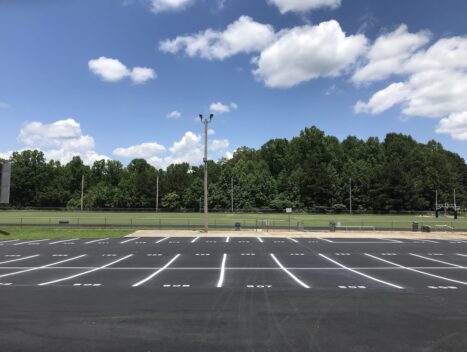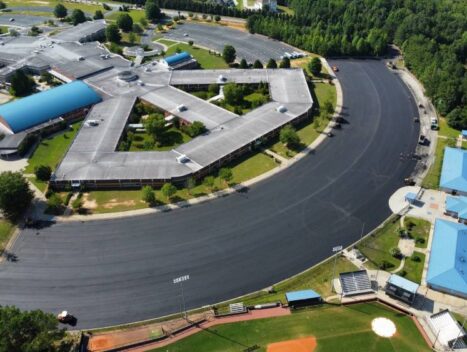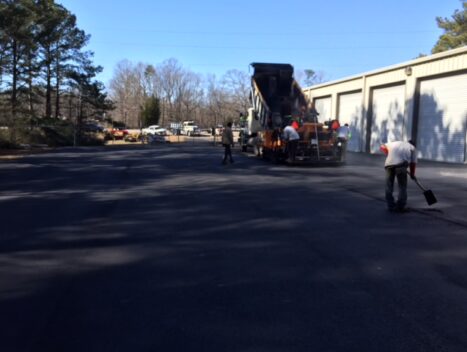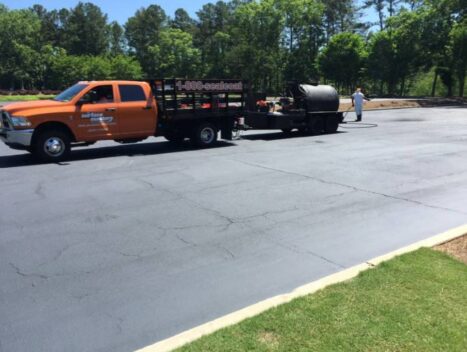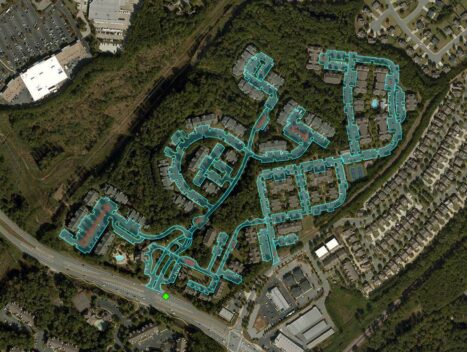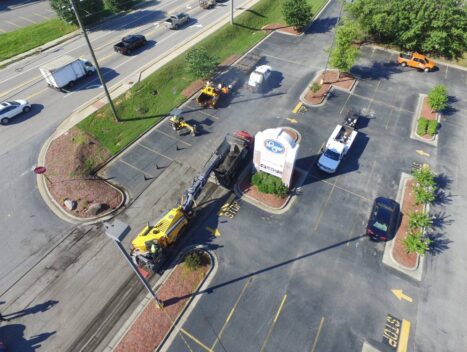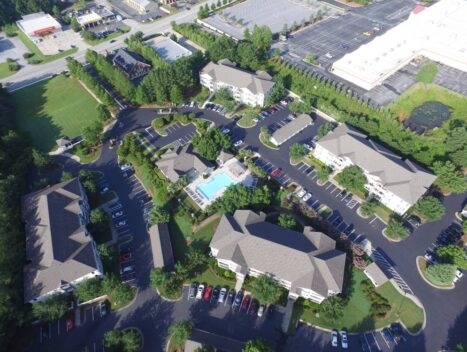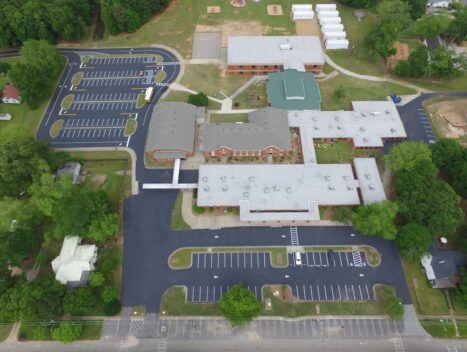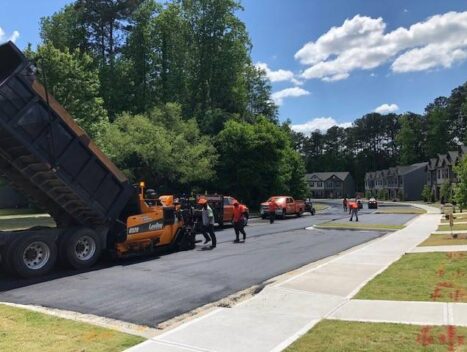Asked Questions ?
What Is The Difference Between Asphalt Paving and Sealcoating?
Asphalt paving and sealcoating are two distinct processes that are used to maintain and enhance the longevity of asphalt surfaces. Asphalt paving involves the installation of a new asphalt surface, while sealcoating is a preventative maintenance process that is applied to existing surfaces.
Asphalt paving is typically done when a new surface is needed, such as when a new driveway or parking lot is constructed. This process involves the installation of a new layer of asphalt over a prepared base. The asphalt is then compacted and smoothed to create a smooth, level surface.
Sealcoating, on the other hand, is a preventative maintenance process that is used to extend the life of an existing asphalt surface. It involves the application of a protective coating to the surface of the asphalt, which helps to prevent damage from water, sunlight, and other environmental factors. Sealcoating also helps to maintain the appearance of the surface by filling in small cracks and smoothing out rough spots.
Why Should I Choose Asphalt Pavement For My Paving Needs?
Asphalt pavement is a popular choice for paving needs due to its numerous benefits. Here are some reasons why you should choose asphalt pavement:
- Durability: Asphalt pavement is durable and can withstand heavy traffic and harsh weather conditions, making it ideal for high-traffic areas such as parking lots and roads.
- Cost-effective: Asphalt pavement is cost-effective compared to other paving materials, as it requires less maintenance and repair over time.
- Quick installation: Asphalt pavement can be installed quickly, which means less disruption to your daily routine.
- Safety: Asphalt pavement provides a smooth and skid-resistant surface that improves safety for drivers and pedestrians.
- Environmentally friendly: Asphalt pavement is a recyclable material, and its production process emits fewer greenhouse gases than other paving materials. Overall, choosing asphalt pavement for your paving needs is a wise decision that offers numerous benefits.
How Long Will Asphalt Paving Last?
Asphalt paving typically lasts between 10 and 30 years, depending on various factors such as the quality of installation, pavement thickness, drainage, climate, traffic load, and maintenance. A well-maintained asphalt surface can last anywhere from 15 to 30 years. However, heavy traffic, harsh weather conditions, and lack of maintenance can cause the lifespan of asphalt paving to decrease significantly. It is recommended to perform regular maintenance such as sealcoating, crack filling, and pothole repair to extend the lifespan of asphalt paving.
What is An Asphalt Overlay And Is It Appropriate For My Needs?
An asphalt overlay is a layer of new asphalt applied over the existing base layer of asphalt on a driveway, parking lot, or road. These new layers are generally about 1.5- to 3-inches thick, depending on the demands on the asphalt and the depth of surface asphalt removed. Asphalt overlays can be appropriate for various needs, including pavement preservation and restoration, surface correction, and improving skid resistance. However, the appropriateness of an asphalt overlay for your specific needs depends on several factors. These include the condition of the existing pavement, the amount of traffic the pavement receives, and the climate of the area. It is recommended to consult with an experienced paving contractor to determine if an asphalt overlay is appropriate for your needs.
What Is The Typical Procedure For Installing A Parking Lot?
- Preparation and Marking: This includes preparing the area where the pavement will be installed, choosing the right contractor for the job, getting all necessary permits in place, and having the appropriate utility companies come out to mark where their lines are buried.
- Excavation and Grading: The existing surface is removed, and the area is graded to ensure proper drainage.
- Subbase Installation: A subbase layer of crushed stone or gravel is installed to provide a stable foundation for the pavement.
- Asphalt Installation: Hot-mix asphalt is then laid on top of the subbase and compacted to create a smooth surface.
- Pavement Marking: Once the asphalt is in place, the surface is marked with paint for parking spaces, directional arrows, and other necessary markings.
- Maintenance: Regular maintenance, such as sealcoating and crack filling, is necessary to extend the life of the pavement.
How Do I Maintain My Asphalt To Keep It Looking Good For Years To Come?
To maintain your asphalt and keep it looking good for years to come, there are a few things you can do. First, keep it clean by regularly sweeping up debris and washing it with water. Use a brush with stiff bristles to get all of that debris off of the asphalt’s surface, as that dirt and grime can get into the asphalt and cause cracks to form over time. Second, fill any cracks or potholes as soon as possible to prevent them from getting worse. You can use a cold patch or hot-mix asphalt to fill the cracks, depending on the size and severity of the damage. Third, sealcoat your asphalt every two to three years to protect it from the elements and prevent it from drying out and cracking. This will also help it retain its color and keep it looking good. Finally, avoid parking heavy vehicles or equipment on your asphalt for extended periods, as this can cause damage to the surface.
When Is Asphalt Repair Needed?
Asphalt repair is needed when there are visible signs of degradation or damage. Some signs that indicate the need for asphalt repair include cracking, potholes, broken and crumbling edges, and water pooling on the surface. Small cracks can be caused by weather conditions, such as changes in temperature and moisture, and can lead to moisture intrusion, which could cause further damage in the near future. Potholes form on asphalt that has deteriorated and has lost its resilience, so it can’t withstand pressure from cars or other heavy loads. Water pooling on the surface is another sign of damage and could indicate a problem with the road’s foundation. It is important to address these issues as soon as possible to prevent further damage and ensure safety on the road.
When Is Parking Lot Striping Needed?
Parking lot striping is needed for various reasons. One of the main reasons is to create a safe environment for both drivers and pedestrians. Striping helps to identify pedestrian walkways, loading zones, and parking spots, which can prevent accidents and improve traffic flow. Additionally, proper striping is required by law, and non-compliance can lead to penalties. Striping also enhances the aesthetics of a parking lot and can increase the perceived value of a property. Finally, striping can also improve the overall functionality of a parking lot by maximizing the number of parking spaces available
What Is Crack Sealing?
Crack sealing is the process of filling or sealing cracks in pavement to prevent water and other debris from entering and damaging the pavement structure. It is considered a cost-effective method for preserving the life of pavement by preventing further damage and deterioration. The process involves injecting a hot or cold sealant into the cracks, which then hardens and creates a barrier against water infiltration and other harmful materials. Regular crack sealing can extend the life of pavement by up to 5 years and is recommended as a preventative maintenance procedure.
When Is Asphalt Milling Needed?
Asphalt milling is needed when the pavement has widespread surface damage, such as cracking, raveling, or an uneven slope, but the sub-base is still intact. Milling is a process where the top layer of asphalt is removed using a milling machine to create a level surface for repaving. This process is an alternative to a full demolition and repaving, which can be more expensive and time-consuming. Asphalt milling is also used to recycle old asphalt as aggregate and resurface roads, parking lots, and residential and commercial paving.

